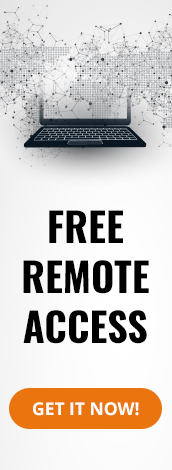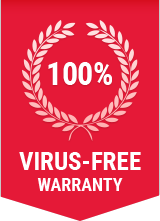What is COMDLG32.OCX?
Originally developed by Microsoft Corporation. COMDLG32.OCX is a legitimate file process and also called as CMDialog ActiveX Control DLL that is associated with CMDIALOG. It is located in C:\Program Files by default.
COMDLG32.OCX virus is created when malware authors write virus files and name them after COMDLG32.OCX with an aim to spread virus on the internet.
Affected Platform: Windows OS
How to check if your computer is infected with COMDLG32.OCX malware?
If your system is affected by COMDLG32.OCX malware, you will notice one or the several below symptoms:
COMDLG32.OCX occupies an unusually large CPU memory
- Erratic internet connection
- Your browser is bombarded with annoying popup ads
- Computer screen freezes
- PC's processing speed suffers
- You are redirected to unknown websites
To pinpoint the virus file location, take the following steps:
Step 1: Press CTRL+ALT+DEL keys at once to open Task Manager.
Step 2: If you notice the file located outside C:\Windows\System32 you should run an antivirus scan to get rid of the malware.
How to remove COMDLG32.OCX malware from system using Comodo Cleaning Essentials?
You can either choose to remove COMDLG32.OCX and other malwares using Comodo Antivirus, or Comodo Cleaning Essentials (CCE) – both of which are absolutely free to download! CCE is a set of computer security tools designed to help you identify and remove malwares and unsafe processes from an infected computer.
To remove malwares using CCE, take the following steps:
1. Check the system requirements and download the feature-rich CCE suite for free.
2. After installation, choose the type of scan you want to perform. CCE offers 3 scan options to get rid of malwares from a PC:
- Smart Scan: Does a scan on critical areas of your system.
- Full Scan: Does a complete scan of your system.
- Custom Scan: Does a scan only on selected items.
The process to initiate the above mentioned scans are self-explanatory and thus, easy-to-use.
Additionally, it's recommended that you approve of any updates that the CCE will prompt you about to ensure it does a better job of identifying all the latest threats.
3. Click 'Next' to view the results.
Regardless of the type of scan you choose, the results will sometimes show false positive (flagging files that are actually safe), which has to be ignored. Only select the files you want to get rid of.
4. Click 'Apply' to apply the selected operations to the threats. The selected operations will be applied.
| No. | Company | File Type | SHA1 | MD5 | Malware Name |
Digitally Signed |
File Version |
Product Version |
Submitted From |
Malware Behavior |
|---|
- 4 items per page
- 8 items per page
- 16 items per page
- 32 items per page
| No. | Company | File Type | SHA1 | MD5 | Digitally Signed |
File Version |
Product Version |
Submitted From |
|---|---|---|---|---|---|---|---|---|
| 1 | Microsoft Corporation | Executable | eb49323be4384a0e 7e36053f186b3056 36e82887 |
ab412429f1e5fb97 08a8cdea07479099 |
Yes | 6.01.9782 | 6.01.9782 |  United States United States |
| 2 | Microsoft Corporation | Executable | eb49323be4384a0e 7e36053f186b3056 36e82887 |
ab412429f1e5fb97 08a8cdea07479099 |
Yes | 6.01.9782 | 6.01.9782 |  United States United States |
| 3 | Microsoft Corporation | Executable | 9bc145b54500fb6f bea9be61fbdd90f6 5fd1bc14 |
d76f0eab36f83a31 d411aeaf70da7396 |
Yes | 6.00.8418 | 6.00.8418 |  United States United States |
| 4 | Microsoft Corporation | Executable | 0ed1fba0a1ebd514 eaf2ed6917182314 4f662730 |
9a4d0f97f0d84f87 7b388d4a12d90b6b |
Yes | 6.01.9841 | 6.01.9841 |  United States United States |








